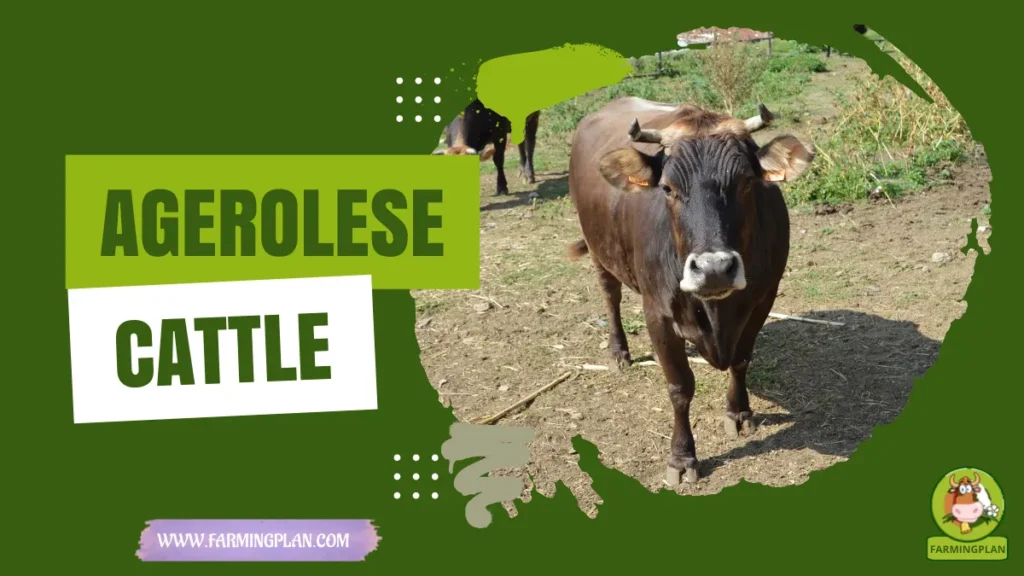The Blanc de Hotot Rabbit is a captivating sight, one of the most beautiful and eye-catching rabbit breeds you’ll ever encounter. This rabbit stands out with its pure white coat and bold black eye bands that resemble eyeliner. It’s a medium-sized rabbit breed known for its commercial body type, muscular build, and calm, friendly nature. Whether you’re a pet owner, a rabbit breeder, or someone new to rabbit breeds, the Blanc de Hotot is a perfect choice for companionship, shows, or even small-scale breeding. This friendly rabbit is more than just good looks. It’s a well-tempered, hardy breed that adapts well to different living spaces.
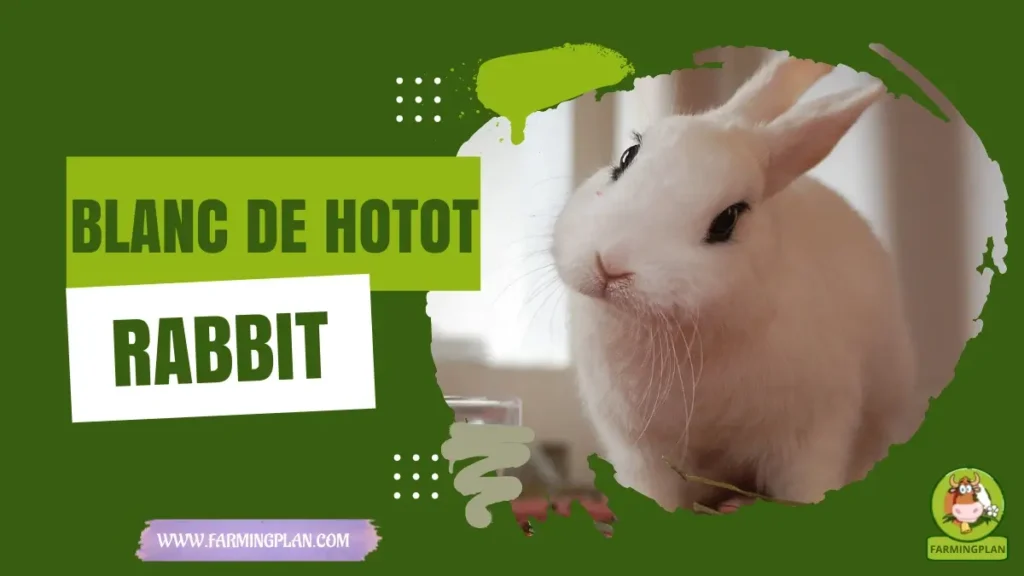
History and Origin of the Blanc de Hotot Rabbit
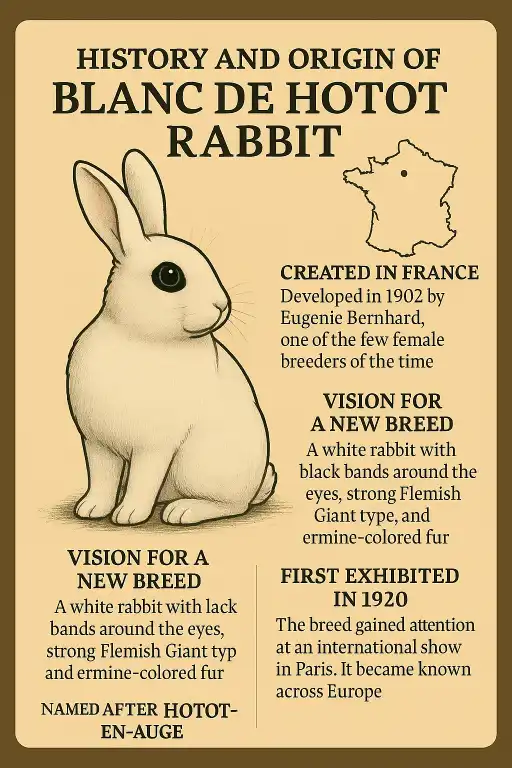
The Blanc de Hotot Rabbit has a rich and fascinating history that started in France over 100 years ago. This special rabbit breed was first developed in 1902 by Eugénie Bernhard, one of the few female breeders of her time. She lived near the town of Hotot-en-Auge, which is where the breed gets its name. This historical connection adds a unique depth to the Blanc de Hotot’s appeal.
Eugenie had a bold goal—she wanted to create a white rabbit with the strength of a white Flemish Giant, the body shape of a white Vienna, and the snowy coat of an Ermine rabbit, all wrapped up with bold black eye rings. After years of careful breeding, she succeeded. The rabbit became known as the White of Hotot or Blanc de Hotot. The breed was first shown to the world at the Exposition International in Paris in 1920. It quickly gained attention for its black bands around the eyes, which made it look like the rabbit was wearing glasses. Soon after, it began spreading across Europe.
By the 1970s, the Blanc de Hotot had arrived in the United States thanks to efforts from breeders like Bob Whitman. Over time, interest dropped, and the breed faced a severe population decline. But dedicated rabbit lovers and breeders worked hard to bring it back. Today, this rare breed is still considered endangered but is gaining popularity again—especially with people who want a unique, beautiful rabbit as a pet or show animal.
Reads More: Frizzle Chickens: 5 Irresistible Reasons You’ll Love Them
Characteristics of the Blanc de Hotot Rabbit
The Blanc de Hotot Rabbit is best known for its striking appearance. Its white coat is soft, thick, and full of guard hairs, giving it a glowing shine. But what makes this beautiful rabbit stand out are the bold black eye bands. These look like dark eyeliner or spectacle-like black rings that circle each eye. It’s one of the most unique features of any rabbit breed.
This medium-sized rabbit has a strong, muscular, and well-rounded body. The breed has a commercial body type, meaning it’s broad and deep, not too long or short. The ideal weight is between 8 to 11 pounds for bucks and up to 11 pounds for does. The head is short and wide, with small but powerful jaws. The eyes are dark brown, making the black rings pop even more. The head also has short, upright ears, often touched with a bit of black at the tips.
Sometimes, rabbits in this breed may have color spots outside the ring or missing parts of the ring. These are called mismarks, and while the rabbit may still make a lovely pet, it won’t qualify for shows. That’s why rabbit breeders focus on keeping the markings sharp and clean. With its bold look, strong build, and fluffy coat, the Blanc de Hotot is one of the most striking rabbits you’ll ever see. It’s no wonder they turn heads wherever they go!
Nature and Temperament of the Blanc de Hotot Rabbit
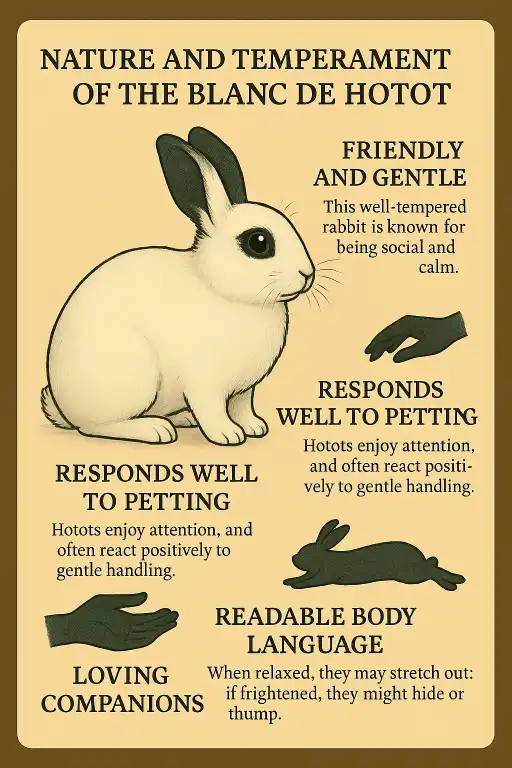
The Blanc de Hotot Rabbit is not just pretty—it’s also friendly, gentle, and easy to love. This well-tempered rabbit is known for being social and calm, which makes it an excellent choice for families, first-time rabbit owners, and even rabbit breeders looking for easy-going stock. Hotots enjoy being around people and other rabbits. If raised with care, they become well-socialized rabbits that love attention. They may not be as playful as some smaller breeds, but they still enjoy hopping around and exploring their space. With their calm nature, they often respond well to gentle petting and soft voices.
These rabbits also show clear body language. If they feel safe and happy, they’ll stretch out and relax. But if they’re scared, they may hide or thump their feet. So, it’s essential to watch how they act and make sure they feel secure. They’re great with kids, but young children should always be taught how to handle them properly. Rabbits have delicate spines, and rough handling can hurt them.
With some training and love, hot dogs become loyal companions, enjoying cuddles and calm times. Because of their size and calm behavior, they’re also a good fit for homes with enough space for a spacious rabbit cage or larger enclosure. They aren’t super active but enjoy daily out-of-cage time to stretch, explore, and stay healthy.
Food and Diet for a Healthy Blanc de Hotot Rabbit
Keeping your Blanc de Hotot Rabbit healthy starts with the right food. A proper rabbit diet keeps their body strong, coats shiny, and digestion smooth. To stay in top shape, these beautiful rabbits need a balanced mix of timothy hay, fresh veggies, and rabbit pellets. For instance, a daily diet could include a handful of timothy hay, a cup of leafy greens, and a quarter cup of rabbit pellets per five pounds of body weight.
The base of their diet should always be high-quality timothy hay. It helps with digestion and keeps their teeth from growing too long. Offer hay at all times—this should make up most of what your rabbit eats daily. Next, add leafy greens like romaine lettuce, cilantro, parsley, or dandelion. These should be fresh, clean, and free of chemicals. Avoid toxic plants like iceberg lettuce, onions, or tomato leaves—they can be harmful.
You can also give a small amount of rabbit pellets. Choose a plain, high-fiber brand with no added seeds or colored bits. One-fourth cup per five pounds of body weight is usually enough for adult rabbits. Fresh water is just as important. Keep a clean water bottle or bowl nearby, and change it daily. Rabbits drink more than you might think! Too many treats can cause problems. Fruits like apples or bananas are okay, but only in small amounts. Sugary foods and human snacks should be avoided.
Tip: “Stick to simple, natural foods. If it’s safe for a rabbit and grows from the ground, it’s usually a smart choice!”
Usage and Purpose of the Blanc de Hotot Rabbit
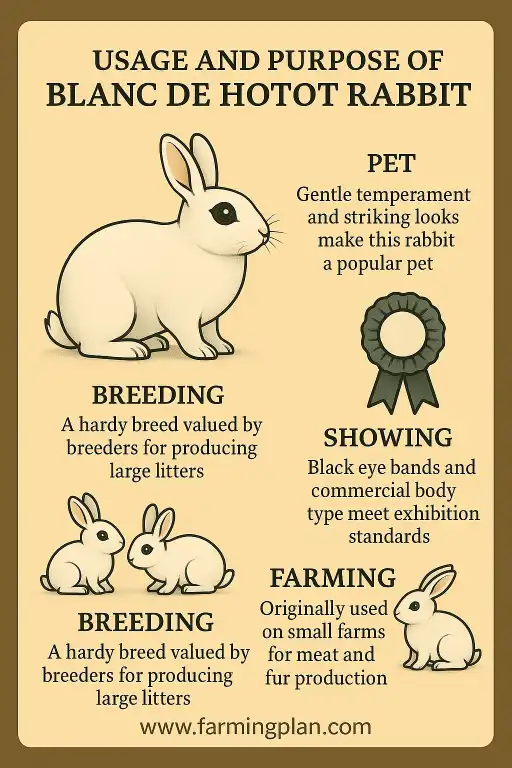
The Blanc de Hotot Rabbit may look fancy, but it’s also a very practical and versatile breed. People raise this rabbit for many reasons, including pet companionship, breeding, farming, and even rabbit shows. One primary use of this medium-sized rabbit is as a pet. Thanks to their gentle nature and unique looks, they make wonderful pet bunnies for families, seniors, or anyone looking for a quiet friend. These rabbits are easy to bond with, primarily if raised in a socialized environment with regular human contact.
Blanc de Hotots are also used in rabbit shows. Their black eye bands, strong body shape, and soft white coat meet many show standards. Breeders work hard to ensure the markings are clear and the rabbit’s body meets the perfect commercial body type. These rabbits were once raised on small farms for meat and fur. Their muscular build made them a good choice for this use. While this isn’t common today, the breed still holds value as a hardy breed with good genetic health and strong litters.
Breeders enjoy working with Blanc de Hotots because they produce good-size litters and tend to be caring mothers. They are an innovative and rewarding choice for people looking to breed rabbits. So whether you want a beautiful rabbit for your home, a top-notch show bunny, or a new line for your rabbitry, the Blanc de Hotot is well-suited for many roles.
Special Features of the Blanc de Hotot Rabbit
The Blanc de Hotot Rabbit has many unique qualities that stand out from other rabbit breeds. This rare breed rabbit is packed with special traits from its appearance to its behavior. The most famous feature is the black eye bands. These distinct bands circle each eye like eyeliner, giving the rabbit a bold, dramatic look. They are about 1/8 to 1/4 inch wide and must be even and complete for show quality.
Another highlight is its pure white coat. It’s dense, shiny, and full of guard hairs that help protect the rabbit and give it a soft feel. The coat stays clean regularly, and loose hairs are easy to brush. This breed also has a muscular and well-rounded body. It was designed for strength, not just looks. That’s why it has a strong, deep, and balanced commercial body type.
Hotots are also known for being hardy rabbits. They adapt well to different climates and stay healthy with proper care. They’re not too fussy about food or space, and their calm nature makes them easy to manage. Breeders love that Hotots often give birth to good-sized litters and take good care of their babies. They also have a long history and were brought back from near extinction, which adds to their rare and special status. If you want a rabbit that’s beautiful, strong, and full of charm, the Blanc de Hotot checks every box.
Health Issues & Prevention for the Blanc de Hotot Rabbit
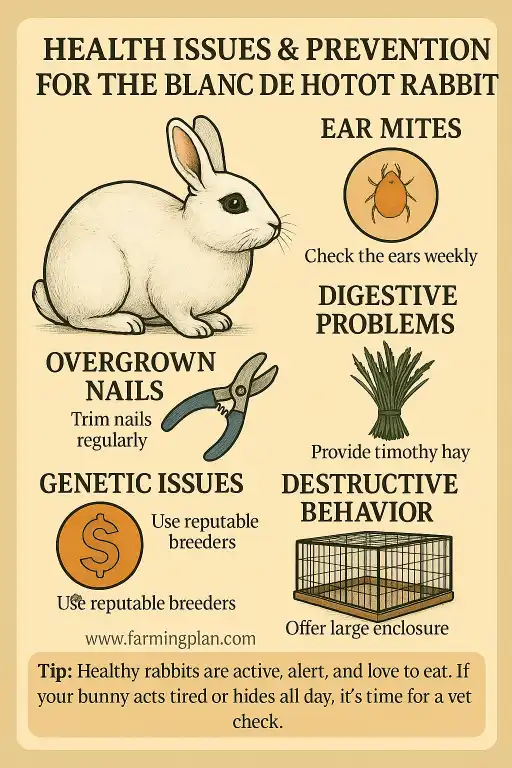
The Blanc de Hotot Rabbit is known as a hardy breed, but like all animals, it can face health challenges. Keeping your rabbit healthy means knowing what to watch for and how to prevent problems before they start. One of the most common issues in rabbits is ear mites. These tiny bugs cause itching, shaking, and crusty buildup in the ears. Check your rabbit’s ears weekly and clean them gently. If you spot signs, visit a vet right away.
Another issue is overgrown nails. Nails can curl, break, or cause pain without regular nail trimming. Use rabbit-safe nail clippers and trim nails every few weeks. Rabbits can also suffer from digestive problems if their diet isn’t proper. That’s why timothy hay is so important—it keeps their stomachs working smoothly. Avoid sugary treats, and make sure your rabbit drinks clean water daily.
Some hot spots may be born with genetic health issues, like misaligned teeth or poor vision. That’s why it’s essential to buy from a breeder who offers health guarantees and shares the health history of their rabbits. You should also check for signs of destructive behaviors. A stressed or bored rabbit might chew on cage bars or furniture. This can be solved with a larger enclosure, safe enclosure decor, and plenty of playtime. Keeping your Hotot in a clean, spacious home with the proper rabbit diet and daily care can prevent most health problems. With love and attention, these rabbits live long, happy lives.
Reads More: Austrian Pinscher Dog: 7 Incredible Benefits You Need to Know
Step-by-Step Pet Owner Care Guide for the Blanc de Hotot Rabbit
Caring for a Blanc de Hotot Rabbit requires attention to their needs, but the effort pays off in the form of a healthy, happy pet. Here’s a step-by-step guide to raising and caring for your new pet bunny.
Prepare the Enclosure
Start by setting up a spacious rabbit cage or larger enclosure. Hotots need room to move, so aim for at least 12 square feet of space for one rabbit. The enclosure should be made from rabbit-safe materials and include a litter box for easy cleanup. Use non-clumping litter to keep your rabbit’s paws safe.
Provide Fresh Hay
Hay should be available to your rabbit at all times. Timothy hay is the best choice for adult rabbits. It helps with digestion and keeps their teeth healthy. Ensure there’s always enough hay in the cage or a designated feeding area.
Feed a Balanced Diet
As part of your rabbit diet, include plenty of fresh leafy greens like romaine lettuce, parsley, and cilantro. Avoid giving too many high-sugar fruits, and stick to small portions of rabbit pellets. Fresh water is essential, so keep a clean bottle or bowl nearby.
Regular Grooming
Brush your Blanc de Hotot at least once a week to keep its white coat shiny and prevent loose hairs from building up. Use a soft brush to remove dirt or tangles, and look for signs of overgrown nails. If you notice any, trim them using rabbit-safe nail clippers.
Ensure Proper Socialization
Spend quality time with your rabbit every day. Blanc de Hotots are social creatures and thrive on interaction. Gentle handling and positive reinforcement can help them become well-socialized rabbits who enjoy cuddling and playtime.
Monitor Health Regularly
Keep an eye on your rabbit’s health. Look for signs of illness, such as decreased appetite, lethargy, or unusual behavior. Check their ears for ear mites, inspect their teeth for misalignment, and monitor their weight to avoid obesity.
Provide Enrichment
Rabbits need mental stimulation to prevent boredom. Give your Blanc de Hotot toys, tunnels, and chewable items like untreated wood or cardboard. Ensure their environment is safe and free from dangerous objects they might chew.
Create a Comfortable Environment
Hotots love to be comfortable. Make sure their spacious cage is lined with soft bedding, and provide hiding places where they can feel secure. If you allow them to roam outside their cage, always supervise to ensure they stay safe.
Vet Check-ups
Regular visits to a rabbit-savvy vet are essential. A vet can check for health issues, ensure your rabbit is current on necessary treatments, and provide professional care advice. By following these simple steps, you’ll ensure your Blanc de Hotot Rabbit thrives in its new home and enjoys a long, healthy life with you.
Tip: “Create a daily routine for your bunny to keep them feeling safe and secure. Rabbits love predictability!”
Expert Tips & Best Practices for Caring for a Blanc de Hotot Rabbit
To ensure your Blanc de Hotot Rabbit stays happy and healthy, here are some expert tips and best practices to help you get the most out of your experience as a pet owner.
Provide Plenty of Space
Blanc de Hotot Rabbits are medium-sized rabbits that thrive in larger spaces. Allow them to roam free in a bunny-proofed room for part of the day if possible. A larger enclosure with lots of space to stretch and hop around is essential for keeping them active and engaged.
Use High-Quality Rabbit Pellets
When choosing rabbit pellets, select a high-quality, fiber-rich brand with no added sugars, seeds, or dried fruits. The more natural the pellets, the better for your rabbit’s health. Look for those that are timothy hay-based to ensure proper digestion.
Create a Socialized Environment
Hotots are well-socialized rabbits but need consistent interaction to remain friendly and trusting. Spend time petting, playing with, and talking to them daily. This helps build a bond and ensures they are comfortable around humans and other pets.
Regular Nail Trimming
Even if your rabbit is mainly indoors, regular nail trimming is essential for their health and comfort. Overgrown nails can cause injury or discomfort, so keep track of their nails and trim them every 3-4 weeks. Rabbit-safe nail clippers make the process easier and safer.
Monitor Their Coat
The Blanc de Hotot’s white coat requires regular grooming to prevent matting and loose hair. Brush it at least once a week and use a de-shedding tool during the molting season. This helps reduce hairballs and keeps the coat shiny and clean.
Rabbit-Proof Your Home
If your rabbit spends time outside its spacious cage, it’s important to bunny-proof the area. Hide electrical cords, secure furniture, and ensure there are no small spaces where the rabbit can get stuck or chew dangerous objects.
Be Aware of Stress
Like all rabbits, Blanc de Hotot Rabbits can become stressed. Keep their environment quiet and calm, especially when adjusting to a new home. If they feel safe and secure, they’ll thrive. Avoid loud noises or sudden changes in their environment.
Choose a Rabbit-Savvy Vet
When choosing a vet for your Hotot, ensure they have rabbit experience. Rabbit-savvy vets are familiar with rabbits’ specific health issues, including dental problems, digestive issues, and ear mites. Regular check-ups are essential for preventing health problems.
Provide Mental Stimulation
Rabbits are curious and intelligent, so they offer plenty of enrichment. Tunnels, chew toys, and foraging activities will keep your Hotot mentally stimulated and prevent boredom. It’s a great way to keep them happy and healthy.
Social Interaction is Key
Blanc de Hotot Rabbits enjoy social interaction and can get lonely if left alone for long periods. If you work long hours, consider getting a second rabbit as a companion. However, properly introduce the rabbits and ensure they get along well.
Tip: “Create a cozy, quiet spot for your Hotot to retreat to when they need a break. A little privacy helps them feel safe and relaxed!”
Following these expert tips ensures that your Blanc de Hotot Rabbit lives a healthy, happy, and long life. With proper care and attention, this charming and beautiful breed can be an excellent addition to your family or rabbitry.
“With its striking white coat and gentle nature, the Blanc de Hotot Rabbit is more than just a pet – it’s a companion that will bring joy and beauty to your home.”
FAQs
1. What is the lifespan of a Blanc de Hotot Rabbit?
Blanc de Hotot Rabbits typically live between 7 to 10 years, with proper care and a healthy environment.
2. What is the ideal diet for a Blanc de Hotot Rabbit?
A balanced diet for a Blanc de Hotot includes unlimited access to timothy hay, fresh leafy greens, and a limited amount of high-quality rabbit pellets.
3. How often should I groom my Blanc de Hotot Rabbit?
Groom your Blanc de Hotot once a week using a rabbit-friendly brush. Increase grooming to twice a week during the molting season to help manage shedding.
4. Are Blanc de Hotot Rabbits good pets for beginners?
Yes, Blanc de Hotot Rabbits are known for their sweet and docile temperament, making them suitable for first-time rabbit owners.
5. What are common health issues in Blanc de Hotot Rabbits?
Common health issues include ear mites, malocclusion, gastrointestinal stasis, and dental diseases. Regular veterinary check-ups are essential for early detection and prevention.
Conclusion
The Blanc de Hotot Rabbit is a striking breed known for its all-white coat and distinctive black eye bands. Originating from France in the early 1900s, it was developed by Eugénie Bernhard through selective breeding of Vienna White and Checkered Giant rabbits with white Flemish Giants. Recognized for its sweet and docile temperament, this breed makes an excellent companion for families and first-time rabbit owners. With proper care, including a balanced diet, regular grooming, and routine veterinary visits, Blanc de Hotpot Rabbits can live up to 10 years or more, bringing joy and elegance to any home. This guide covers everything you need to know—from its origin and traits to diet tips, health care, and step-by-step instructions.

